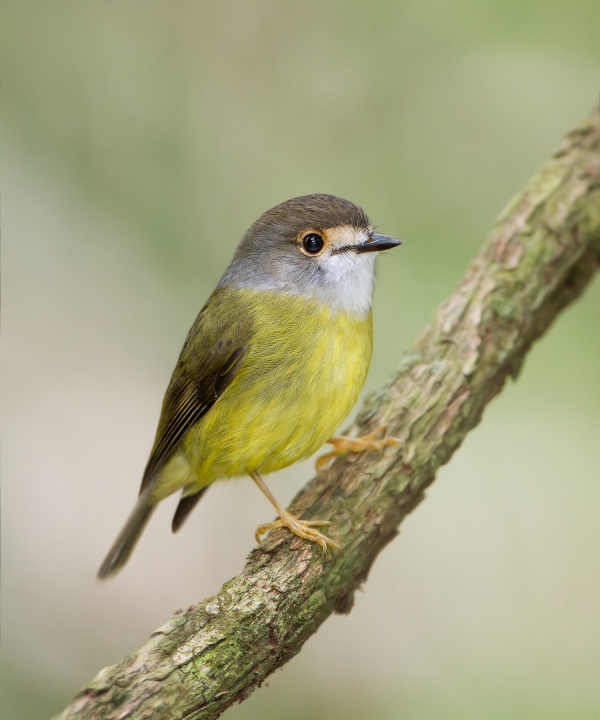Facts About Pale-yellow robin
The pale-yellow robin is a charming little bird that inhabits the subtropical and tropical moist lowland forests of eastern Australia. With its grey head, olive upperparts, white throat, and sunny yellow underparts, this bird is a delightful sight. Though named a robin, it belongs to the genus Tregellasia and is not closely related to European or American robins.
The pale-yellow robin exists in two subspecies: the smaller "nana" found in North Queensland and the larger "capito" which resides in southeast Queensland and northeastern New South Wales. These birds, first described by John Gould in 1854, are insectivores, primarily feeding on insects.
Both male and female pale-yellow robins have similar subdued plumage and measure about 12 to 13.5 centimeters in length. These birds are notably sedentary, remaining within their specific habitats from North Queensland to New South Wales. They favor rainforest and dense eucalypt forests, where they spend most of their time flitting among the trees.
When nesting, the pale-yellow robin shows a preference for the prickly lawyer vine as both nesting material and site. They construct their nests up to 10 meters above the ground. The breeding season spans from July to December, during which they may raise one or sometimes two broods. The typical clutch consists of two pale green eggs adorned with brownish markings.
